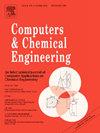A comprehensive modeling, analysis, and optimization of two phase, non–isobaric, and non–isothermal PEM fuel cell
IF 3.9
2区 工程技术
Q2 COMPUTER SCIENCE, INTERDISCIPLINARY APPLICATIONS
引用次数: 0
Abstract
This study models a non-isobaric, non-isothermal two-phase flow in a Polymer Electrolyte Membrane Fuel Cell (PEM-FC), focusing on conservation equations for mass, energy, and momentum across its components. Verification involves comparing PEM-FC performance and temperature distribution with experimental and literature data, showing consistent agreements. Results indicate that increasing cathode channel pressure enhances membrane moisture and reduces power loss. Higher oxygen partial pressure improves PEM-FC performance, whereas increased anode channel pressure heightens ohmic losses and lowers output voltage. Temperature distribution reveals highest temperatures near the cathode catalyst layer due to electrochemical reactions. Adjusting pressures in cathode and anode channels affects these temperatures accordingly. PEM-FC power density is optimized using various algorithms, with simulated annealing proving most effective. Optimal values for gas diffusion layer thickness, electrode porosity, and inlet humidity are determined. Under constant current density, power density increases by 6 % compared to baseline conditions, demonstrating effective parameter optimization for enhancing PEM-FC performance.
两相、非等压和非等温 PEM 燃料电池的全面建模、分析和优化
本研究对聚合物电解质膜燃料电池(PEM-FC)中的非等压、非等温两相流进行建模,重点研究其各组成部分的质量、能量和动量守恒方程。验证工作包括将 PEM-FC 的性能和温度分布与实验数据和文献数据进行比较,结果显示两者一致。结果表明,增加阴极通道压力可提高膜湿度并减少功率损耗。较高的氧分压提高了 PEM-FC 的性能,而阳极通道压力的增加则增加了欧姆损耗并降低了输出电压。温度分布显示,由于电化学反应,阴极催化剂层附近的温度最高。调整阴极和阳极通道的压力会相应地影响这些温度。PEM-FC 功率密度采用各种算法进行优化,其中模拟退火法最为有效。确定了气体扩散层厚度、电极孔隙率和入口湿度的最佳值。在恒定电流密度条件下,功率密度比基准条件增加了 6%,这表明参数优化对提高 PEM-FC 性能非常有效。
本文章由计算机程序翻译,如有差异,请以英文原文为准。
求助全文
约1分钟内获得全文
求助全文
来源期刊

Computers & Chemical Engineering
工程技术-工程:化工
CiteScore
8.70
自引率
14.00%
发文量
374
审稿时长
70 days
期刊介绍:
Computers & Chemical Engineering is primarily a journal of record for new developments in the application of computing and systems technology to chemical engineering problems.
 求助内容:
求助内容: 应助结果提醒方式:
应助结果提醒方式:


